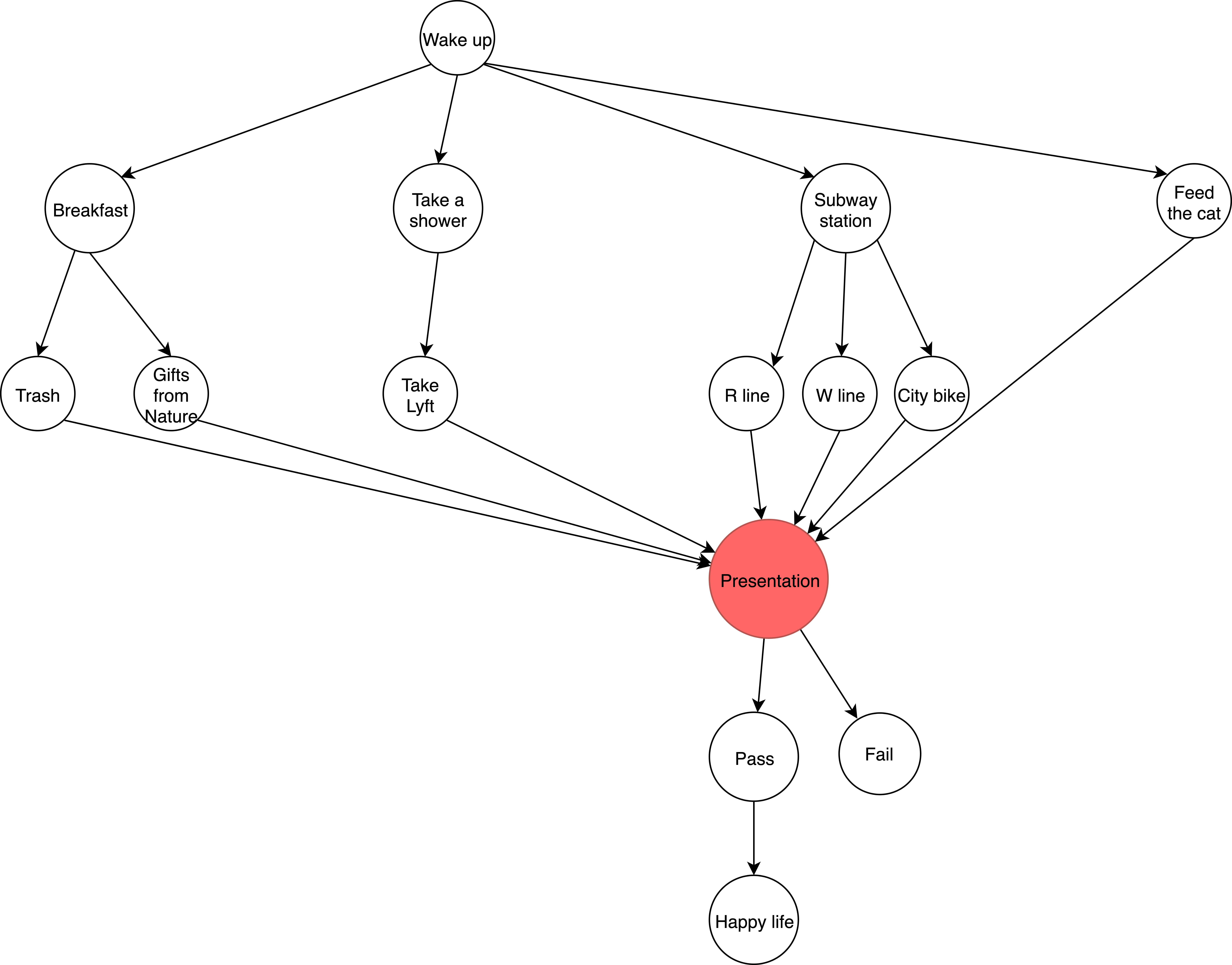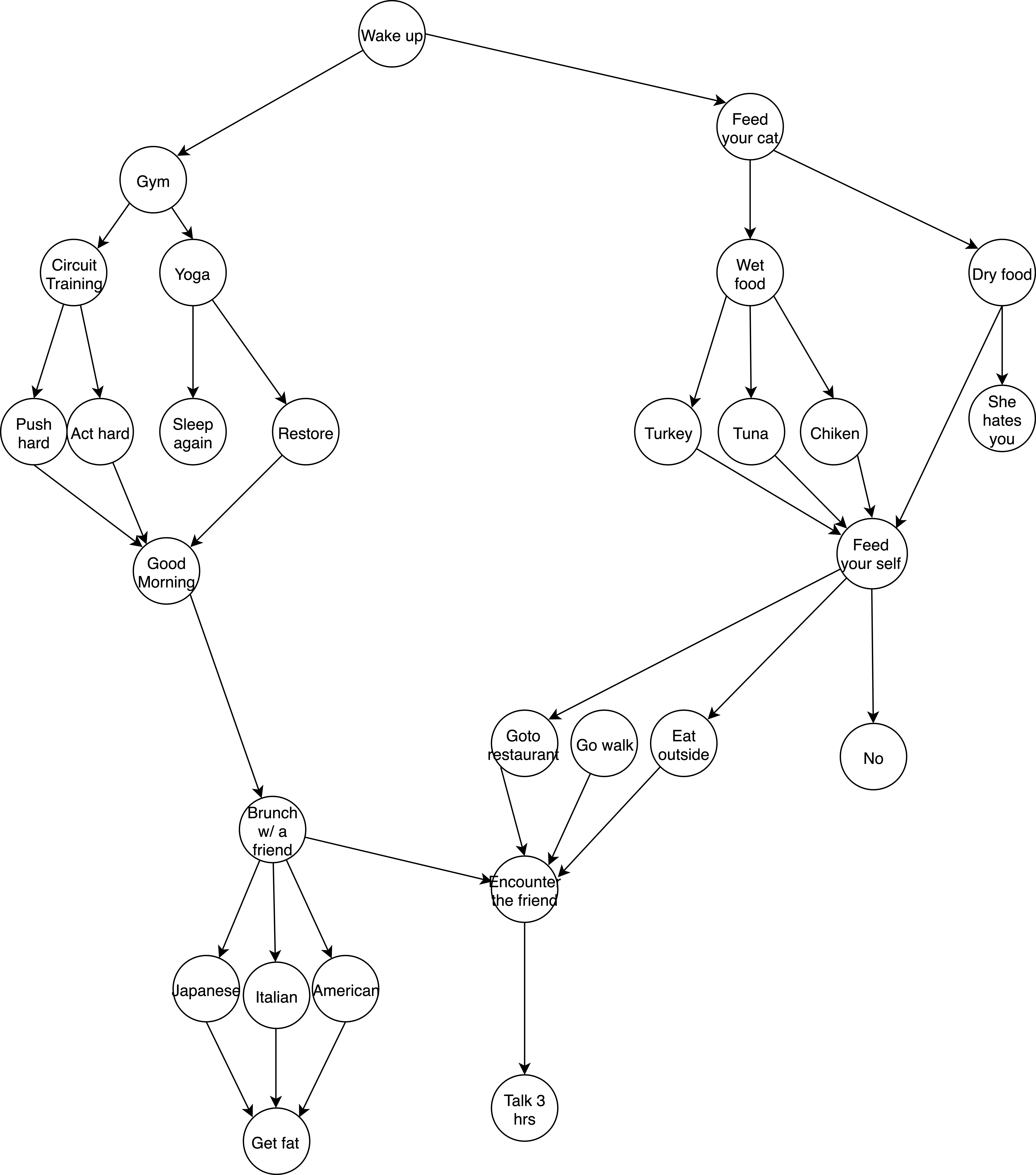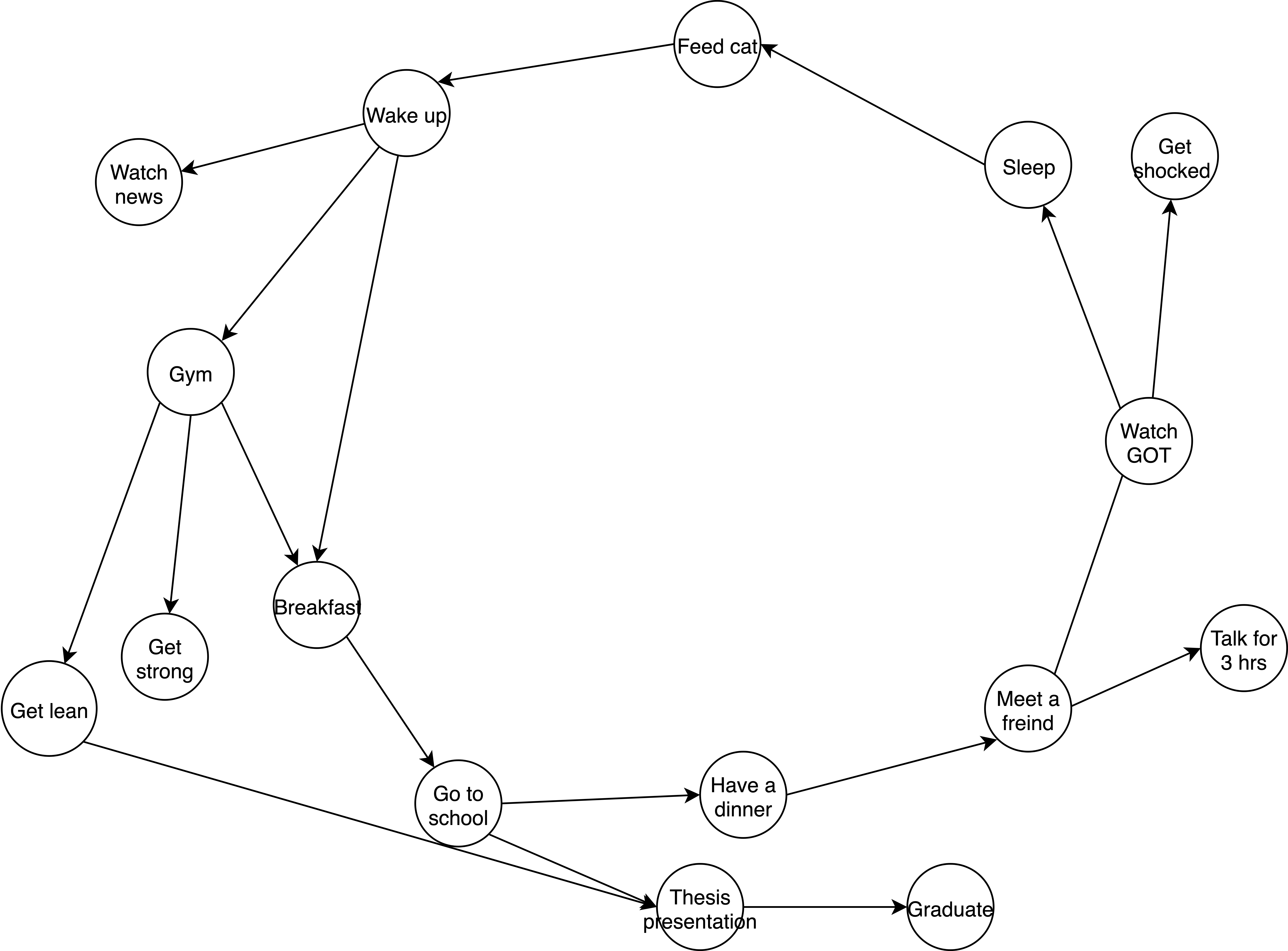The Tree of Babel
Concept
The project goal is understanding and generating interactive narrative structures using Machine Learning models.This project is inspired by the idea of Standard Patterns in Choice-Based Games, that analyzing interactive narrative structures of games as graph and design pattern.
The dataset is customized for ML libraries and scraped from TransverseReadingGallery.
Basic concept:
- Convert graphs to feature matrix of vector embeddings*.
- Categorize graphs by clustering algorithms.
- Generate new graphs from categories using autoencoder.
Used libraries and ML models:
- NetworkX: graph properties (width, length, clustering, degree, cycle)
- graph2vec: extracting feature matrix
- scikit-learn: K-means, Spectral, Agglomerative, Mean Shift Clustering
- PyTorch geometric: Autoencoder
*An embedding is a relatively low-dimensional space into which you can translate high-dimensional vectors. Embeddings make it easier to do machine learning on large inputs like sparse vectors representing words. Ideally, an embedding captures some of the semantics of the input by placing semantically similar inputs close together in the embedding space. An embedding can be learned and reused across models. (Google Developers Machine Learning Course)
Classification
The clustering of graphs from their feature matrix looks like below.I have tried to use different algorithms to classify them automatically, but I could not find significant differences between groups when I checked the properties of graphs.
When I look at the image of clustering visualization, it looks like rather the problem of way of vector embedding than clustering algorithms themselves.
Since the X coordinate just represents the index of graph orders, significant values are Y coordinates only.
To fix this problem, I need to try with the array of feature matrixes of each graph, rather than just a feature matrix of whole graphs.

Basic

They are basic directed graphs.
Mostly have tree shapes.
They look clean and straightforward.
Mostly have tree shapes.
They look clean and straightforward.
Broad

They have larger widths.
Short playthrough, Strong replayability.
Short playthrough, Strong replayability.
Linear

This shape indicates
the linearity of narrative structure.
Easy control of drama. Immersive storytelling through long playtime.
the linearity of narrative structure.
Easy control of drama. Immersive storytelling through long playtime.
Merged

The graphs merge into certain points.
Those points usually represent important events in a story.
Those points usually represent important events in a story.
Clustered

Grouped clusters of nodes make a modular structure.
The groups of nodes could be detailed choices in a single situation.
A tendency to be organized by geography.
Fragmentary, episodic.
The groups of nodes could be detailed choices in a single situation.
A tendency to be organized by geography.
Fragmentary, episodic.
Cyclic

Reversibility. End nodes are redirected to early-stage nodes.
Players can unlock new status while looping similar narratives.
Commonly used for time loops or geo geographic travel.
Players can unlock new status while looping similar narratives.
Commonly used for time loops or geo geographic travel.
Each class is a group of graphs which have prominent values of graph properties. (degree, average_clustering, cycle_basis, treewidth_min_degree, all_pairs_shortest_path_length)
Further Steps
- Labeling nodes with text: make semantic narratives
Using similarity of document matrix of word embeddings and graph feature matrix, assign sentences to node labels.
- Better vector representation of graphs for categorization
- Visual representation of the comparison of generated and original graphs
- Add json file download feature of generated graphs
New York, Spring 2019
